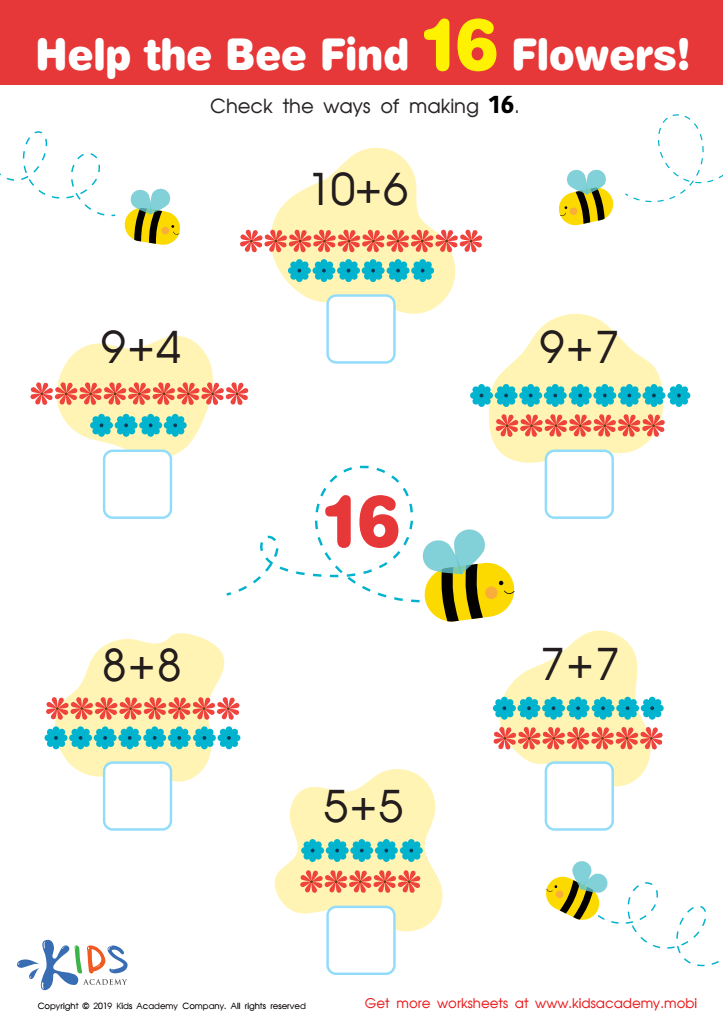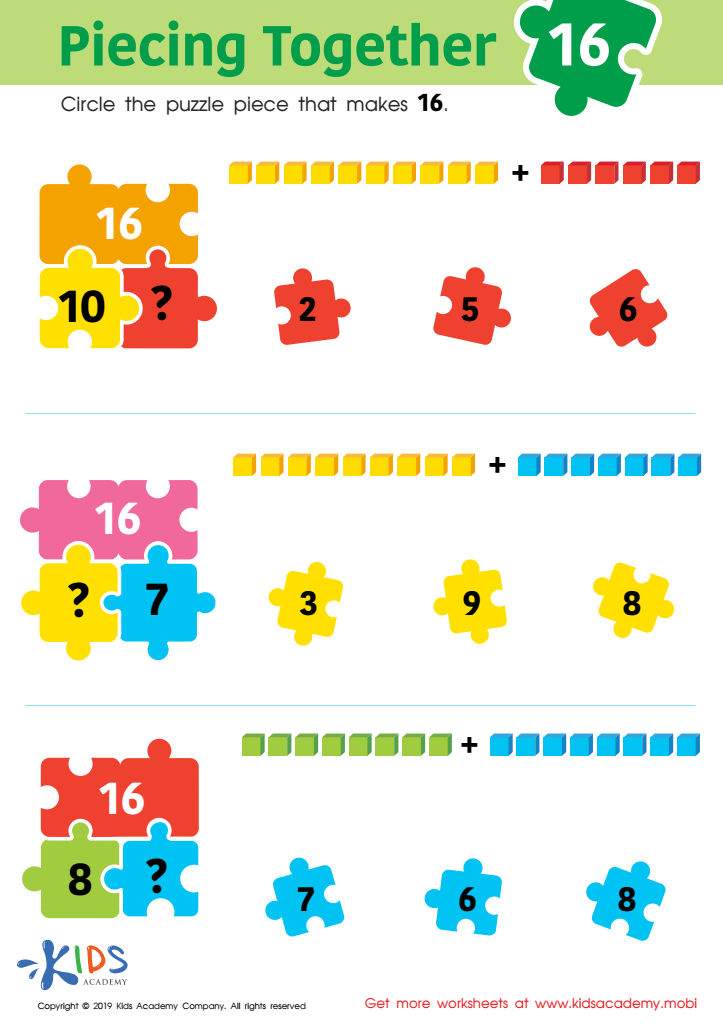Making 16 - Lesson for Kindergarten, Chapter - Composing Numbers
In the "Making 16" lesson, designed specifically for Kindergarten students, learners will embark on an engaging journey through the world of numbers, focusing on the concept of composing numbers up to 20. This lesson is a part of the Additional Practice with Numbers up to 20 unit, housed within the Composing Numbers chapter. Through a series of carefully crafted activities, students will deepen their understanding of how numbers can be broken down and reassembled in various ways.
Starting with the "Finding 16 With Fossils Worksheet" and progressing through to the "Help the Bee Find 16 Flowers Worksheet," and the "Piecing Together 16 Worksheet," students will explore the number 16 through interactive and thematic tasks. These activities are designed not only to maintain engagement but also to foster a deeper connection between the students and the mathematical concepts being taught.
Furthermore, by introducing exercises such as "Add Tens and Ones to make 14, 15, and 16," learners will gain practical experience in combining different numerical values to reach a target number. This approach is instrumental in building a foundational understanding of addition, an essential mathematical skill.
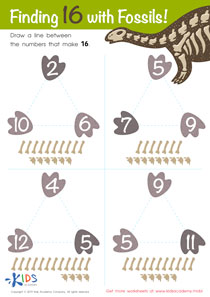
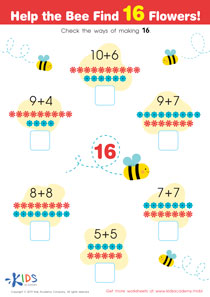

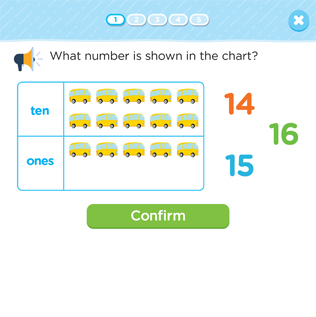
-
Activity 1 / Finding 16 With Fossils Worksheet
Fossils are bones of things that have been long dead. Experts hunt for these fossils, dig them up, study them, and then learn some more about that particular thing such as how it lived, what it looked like, and when it lived. Show your kids the picture in this worksheet and point out the fossils there. In each triangle, there are 3 numbers; two of these numbers when added make 16. Then, help them count the bones and draw a line between the numbers that make 16.
-
Activity 2 / Help the Bee Find 16 Flowers Worksheet
Before beginning this worksheet, you might want to refresh your students’ mind a little bit by asking them to count as high as they can. Now, teach them that different numbers added together can give the same figure. Give your kids simple equations, like adding 2+2 =4, and also 3+1 =4. Ask your students if they can give you other examples, and then look at the simple additions in this printout. Help the bees find 16 flowers by checking the ways of making 16.
-
Activity 3 / Piecing Together 16 Worksheet
Using puzzles and bright colors to teach your preschoolers is one of the surest and best ways they can learn. Combine learning with some fun with this colorful worksheet. Look at the picture here with your students, and ask them what they see. There are simple mathematical equations on the puzzle pieces, and one equation is missing on each. Help your kids solve the problems, and then circle the puzzle piece that will make the bottom puzzle piece numbers equal 16.
-
Activity 4 / Add Tens and Ones to make 14, 15, and 16 - Quiz
This quiz assesses students’ ability to add tens and ones together to make the sums 14, 15, and 16.

